2 May 2018
If someone were to draw up a league table of the geniuses who made the 20th century great, Carlo Mollino would certainly be in the top ten. A peerless designer and aesthete, born into an upper middle-class family in Turin in 1905, Mollino displayed an extraordinary talent for drawing from an early age: he was able to work on two different projects at the same time, drawing with two hands and two pencils, on two sheets of paper. At the age of 28 he published a fictionalized autobiography, Vita di Oberon. He designed legendary works of architecture and astonishing pieces of furniture—which we will not attempt to list—and was systematically and impulsively in love with women, skiing, the mountains, speed, flight, photography, forms, the occult and the geometry of life. He died, struck down by a heart attack, in 1973, but there are some who swear that his spirit still haunts the apartment at no. 2 Via Napione in Turin, now turned into a house-museum—where in 2014 the artist Yuri Ancarani shot the documentary film Séance, a homage to the occult force of his personality. The objects he designed and his Polaroid photos are sought by collectors all over the world, and the number of books, studies and exhibitions on the man grow from year to year. The most recent exhibition to celebrate him is L’occhio magico di Carlo Mollino. Fotografie 1934-1973, curated by Francesco Zanot for the CAMERA center in Turin (until May 13): over 500 pictures from the archives of Turin Polytechnic that offer us yet another glimpse of Mollino’s genius. To mark the occasion we went to meet Fulvio Ferrari, a man who knows a lot about the Turinese architect, and talked with him about photography and much more. “Carlo Mollino put on an act all his life,” Ferrari said straightaway. “It’s impossible to comprehend him through just one aspect: the photos. To grasp the whole it is necessary to understand every part thoroughly.” And so we had a chat about Mollino’s multifaceted personality.
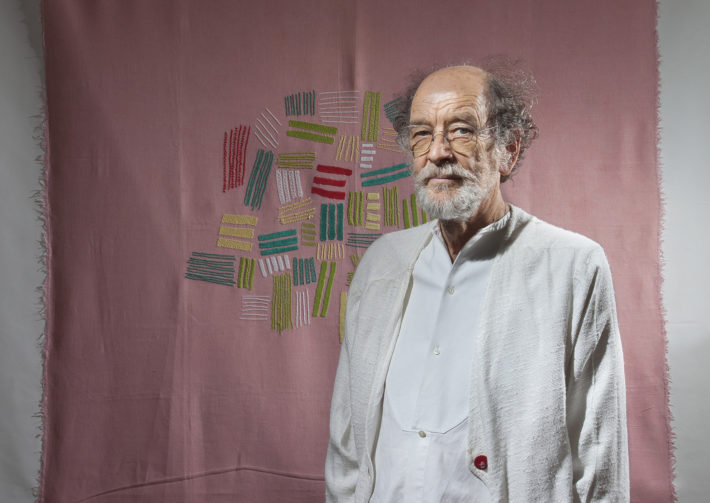
Fulvio Ferrari. Photo: Marcello Bonfanti.
Let’s start from the exhibition L’occhio magico di Carlo Mollino. All the materials come from the collections of the Fondo Carlo Mollino in the Archives of the Roberto Gabetti Library at Turin Polytechnic. How many of his photographs are there?
Carlo Mollino sighed less than 40 photographs in his life, the ones he considered works of art. After publishing his Messaggio dalla camera oscura [published in English as Message from the Darkroom], written in 1943 and brought out in 1949, Mollino never spoke of photography again and disappeared from the scene. But he didn’t stop taking pictures, on the contrary. The images, though, he kept for himself—in the fifties he used a Leica and in the sixties a Polaroid.
In the catalogue of the exhibition, Carlo Mollino. Fotografie 1934-1973, you have written an essay with an unusual title, “La scatola da scarpe” [The Shoebox]. Will you explain it?
In 1984 I bought a shoebox containing hundreds of Polaroid pictures from an old friend of Mollino’s. They were photographs that, in those days, were considered pornographic. They survived only thanks to the fact that they had been kept in magnificent albums. Luckily, they were not thrown away, but hidden in the bookcase.
There are only six signed photographs in the exhibition.
The most interesting is Fiabe per i grandi [Fairytales for Grownups], in which we see a woman standing between the half-open doors of a closet, wearing a long and very elegant dress. It is a dream of woman, her archetype. The inside of the closet is mysterious. In the background there are Greek antiquities and the cast of a horse’s head. It is an artistic message, a highpoint in the representation of female beauty.
![Carlo Mollino, Fiabe per i grandi [Fairytales for Grownups], 1939.](https://www.klatmagazine.com/wp-content/uploads/2018/04/Klat_Locchio_magico_di_Carlo_Mollino_16-710x1338.jpg)
Carlo Mollino, Fiabe per i grandi [Fairytales for Grownups], 1939. Fondo Carlo Mollino, Archives section, Biblioteca Roberto Gabetti, Turin Polytechnic.
Women. In the fifties he started to take their clothes off.
Yes, they became nude and his work became secret. A few friends came to know about it: Turin is not Manhattan. But he didn’t care. He liked people to think he was something that in reality he was not.
In fact Mollino is known chiefly for his Polaroids.
It’s true, but it should be said that those photographs have little to do with eroticism. Everyone thinks they are erotic and fetishistic, but they were a project that he never revealed in his lifetime. A project that was connected with Egyptian culture.
What do you mean?
First of all you need to know that Mollino’s father had installed a darkroom in his house. So for Mollino photography was something familiar, like the telephone might be for us. It was like a pencil for drawing, a car for getting around: a means that he used to express himself. This was in the mid-thirties. We know of no photograph taken by Mollino before 1934. That first photo is excellent. Obviously, he had destroyed the earlier works and left only the best things. Mollino was an artist who used photography, not a photographer. He didn’t document what he saw, he interpreted it.
In what sense was Mollino’s photographic project connected with Egyptian culture?
The pharaoh used to have little statues made called ushabti that were placed in large numbers in the crypt (the “dark room”) of the pyramid, in order to act as his ‘servants’ in the afterlife. Similarly, in the Room of the Butterflies in Mollino’s apartment—a genuine crypt equipped with a bed in the shape of an Egyptian-style boat—there is a wall with hundreds of butterflies mounted on it. The butterfly is a symbol of woman, and so the wall evokes hundreds of women. In the same way, Mollino created his women-ushabti through the photographic medium, using a Polaroid camera. That was the project.
What happened after 1934?
In 1935 he rented an apartment in town and modified it, furnishing it completely. He fitted it with drapes so that the windows disappeared. It was in this apartment, which he would later call Casa Miller—perhaps after Lee Miller, the pupil of Man Ray portrayed by Picasso—that he photographed his models. He would charm them, invite them to come with him and dress them up in clothes that he kept for the portraits.
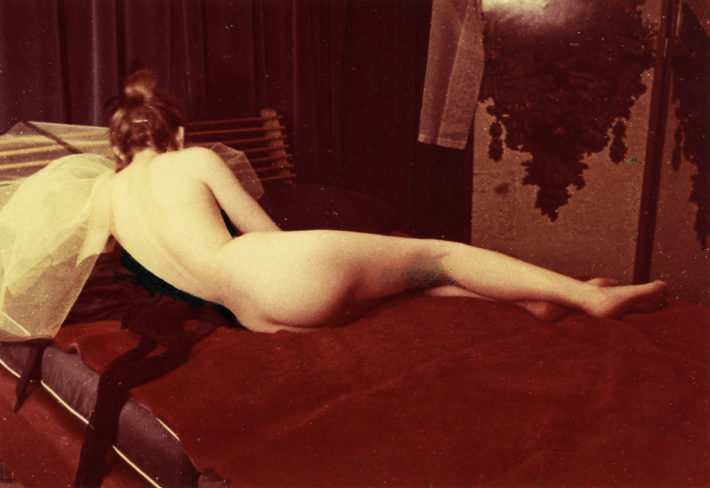
Carlo Mollino, Portrait (untitled), c. 1956-62. Fondo Carlo Mollino, Archives section, Biblioteca Roberto Gabetti, Turin Polytechnic.
Mollino possessed women’s clothes which he used to take his photographs?
There are photos in which the model of the moment is wearing a beautiful long silk dress, but you can see a slight crease, as if it had been kept in a drawer. No woman would go out, in the thirties, in an evening gown with a clearly visible crease. This tells us that Mollino had carefully prepared the materials for his photographs.
Why did he do all this?
Mollino wanted to do something profound, a lasting project. He used these beautiful women, made them up—I think it was he who did their makeup. We know for sure that he used to buy lipstick.
How do you know this?
I found a shopping list, drawn up for his secretary, with the item: “cosmetics for blonde, cosmetics for brunette.”
Did the models realize they were part of a project?
He didn’t want to intimidate the models with photographic equipment. No professional lighting, no screens, no tripod. He offered them tea, put on music. There’s a record player in the apartment. It was a very refined atmosphere.
For how many years did he take pictures?
For seven years he was an artist who used photography as his medium and, as I said, he signed less than 40 pictures. This means that these were the only perfect images on which he worked and which he selected. We shouldn’t forget that Mollino was an engineer, everything he did was a project. Always. And these 40 pictures are his only authentic and acknowledged projects of photographic art.

Carlo Mollino, wooden prototype of the flatware he designed for Reed & Burton, 1950. Fondo Carlo Mollino, Archives section, Biblioteca Roberto Gabetti, Turin Polytechnic.
Always planning, what an effort.
There are no photos of Mollino in which he’s laughing, he was always serious. He didn’t waste time, he was planning continually. Perhaps this is the only “flaw” in Mollino’s life: there were no moments of abandon.
Let’s move on to his profession, as architect.
When the mayor of Turin decided to rebuild the Teatro Regio, which had burned down in the thirties, he said: “there is an architect in Turin who can solve the problem for us for once and all. Call Mollino and ask him if he will design the Teatro Regio.” They invited him to lunch and offered him this chance. He showed his interest and sketched it at once on a piece of paper: “If you want, I’ll do it like this.”
The beauty of being a genius.
Yes, but being a genius, alas, condemns you to solitude.
Mollino had no friends?
With some people he managed to keep a relationship going for a fairly long time, let’s say a few years. With others the association would be quite brief. His friends might include an ordinary craftsman, the greatest expert on horoscopes or an engineer. Mollino also spent time with artists because he wanted to get to know the profound vision of the artist, which was his too: a special capacity for understanding, for fathoming reality.
Did he regard himself as an artist?
In perfect keeping with Egyptian culture, Mollino considered architecture an art. Around the middle of the thirties, he designed the Società Ippica Torinese. It was a rationalist building, with its feet on the ground, that had a riding track and a clubhouse, a place where wealthy horse owners went to drink coffee. The architecture of this club is imbued with Surrealist and Metaphysical elements.
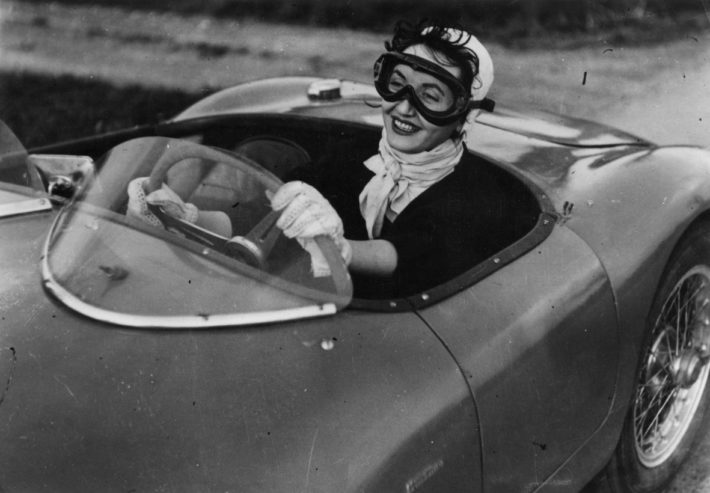
Carlo Mollino, Mimì Schiagno, c. 1952-60. Fondo Carlo Mollino, Archives section, Biblioteca Roberto Gabetti, Turin Polytechnic.
In the Messaggio dalla camera oscura, speaking of the way Man Ray worked, Mollino wrote of an encounter with “phosphorescent larvae in the night of a [photographic] negative” and of the “unveiling of fragile and pale figures in diaphanous stigmatism.” He almost seems to be describing some of his portraits of women.
It’s true. For Mollino woman was luminescent, that is to say she possessed a substance of her own, a sort of light. It was the artist—Mollino or someone else—who transformed this luminescence into manifest light. The woman had in embryo what was needed to become an icon; in his photographic work, Mollino was able to bring about this transformation. This was one of the ways in which Mollino saw women.
In practice, the woman needs a man to become light. Here we go again. Was this Mollino’s view?
Mollino didn’t have just one view of women. He had many. We tend to give things a single definition and take just one view. Mollino’s vision, though, was far more complex and this makes it harder to understand him. Samantha Roddick, feminist, former proprietor and founder of Coco de Mer in London, a store selling erotic items of clothing and articles for the home, has grasped something about Mollino’s women that we hadn’t realized.
What?
Mollino always took his Polaroids from a slightly low position. Samantha has pointed out that this places the woman in a position of importance. Certainly, one of the reasons Mollino was interested in the woman was that he saw her as the means by which we make our life immortal. It is through her that we perpetuate ourselves.
Do women appear in any of his other works, apart from the photos?
Look at the plan of the Teatro Regio, it’s in the shape of a woman’s bust. The opera house is the great building-woman in whose womb opera is born. The interior, in fact, is all rounded, like an egg: the space becomes elusive to the benefit of the opera performed in it. The only point of focus is the stage, where the opera comes to life. The opera, which is “false” in so far as it is just representation, becomes real, and the whole building, which is real in its materiality, is dematerialized. Incredible, don’t you think?
What relationship did Mollino have with his mother?
His mother Iolanda Testa was not a very interesting figure, a soldier’s daughter, from a good family, well-educated and with no frills. In photographs she looks like a woman of the 19th century. Large hats and a narrow waist. If you’re looking for a genuine relationship, I’m sorry for the mother, but it was at his father’s breast that Carlo sucked.
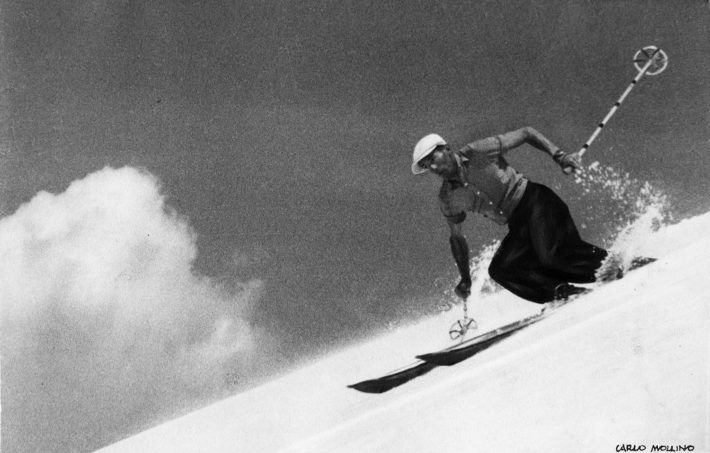
Carlo Mollino, Leo Gasperl, 1940s. Fondo Carlo Mollino, Archives section, Biblioteca Roberto Gabetti, Turin Polytechnic.
So what was his father, Mollino the engineer, like?
In the daytime he drew and made plans, at night he went to inspect the construction sites. It’s said that he kept a steel ball bearing in his pocket. When he wanted to check the laying of marble floors, he would let it roll and if the bearing didn’t run in a straight line, it meant that the floor was not perfectly level. So he’s use a mallet to break it at some points, and the whole thing would have to be done again.
Carlo Mollino and politics.
Mollino was not interested in politics. He paid no attention to politics, because politicians didn’t interest him. He paid no attention to religion.
I don’t think you can say that about religion.
The Catholic religion, I meant. Carlo Mollino was the classic pantheist. His attention was focused on everything around him. He wrote as much in the autobiographical novel Vita di Oberon. When Oberon (his alias) goes out in the morning he lays an ambush for life.
Let’s go back to the women.
In the fifties he shared a bachelor’s pad with the engineer Barba Navaretti. It was where he took all the photographs with the Leica. The pair furnished it with a bed, a couch, chairs and a fireplace designed by Mollino.
How do you share a bachelor’s pad?
It worked like this: the expenses were split in two; one of them used it on even days and the other on odd days, although Barba Navaretti claimed that Mollino didn’t stick to the turns. For Mollino it was the place he took women to photograph them. They furnished the apartment together, splitting everything in half. Each did his share and brought his own furniture. The agreement was that the first to get married would leave to the other everything he had brought, and that obviously he wasn’t going to need anymore.
What failings did Mollino have?
He was not punctual and he was fairly tight-fisted. He never paid. Marchese Orengo, for whom Mollino had designed an extremely costly interior, said that sometimes he didn’t resole his shoes, but put a patch on them like the poor used to do. But then there was the Mollino of nightlife, who did not stint on champagne. He used to go to St. Gallen, in Switzerland, in his Porsche to buy marvelous lace lingerie for his models, and then come back to Turin.
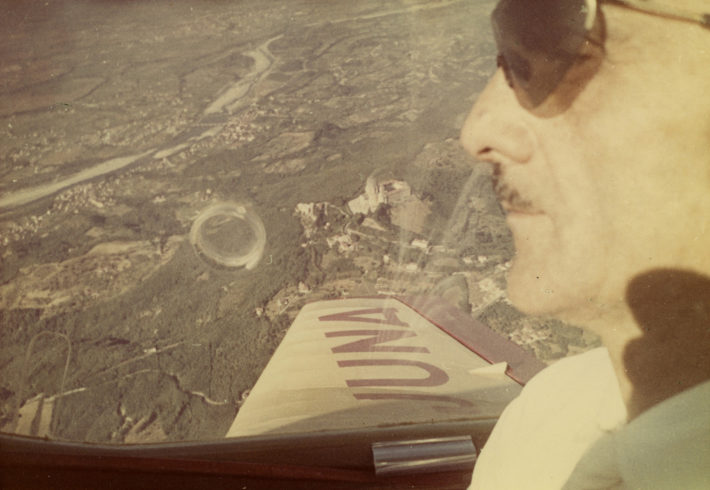
Unknown photographer, Carlo Mollino aboard a plane, c. 1950-60. Fondo Carlo Mollino, Archives section, Biblioteca Roberto Gabetti, Turin Polytechnic.
Unpredictable.
Yes, and with an incredibly open mind. Mollino had the gift of creativity, he was highly imaginative and at the same time very rational, pragmatic. For example, when he published his autobiography, just 28 years old, he was in fact writing out a plan for his life.
He was an academic too.
Yes, professor of interior decoration, but he never gave a lesson on the design of a chair or a table. Over the year he would give a few master classes in which he explored lofty themes and then the work of teaching was done by his assistants.
The women, we were saying. As well as dressing them, did he make love to them?
There is no “proof” of the relations Mollino had with his models and with women in general. He only had one official fiancée in his life, Carmelina Piccolis, a sculptor and teacher at the Accademia di Belle Arti in Turin. He often went to her home.
What was she like?
A blonde woman with a fine imposing nose. They were engaged in the forties and fifties, but split up in 1954. To understand their relationship it suffices to know that the words “I love you” appear nowhere in their correspondence. Their relationship was a thing between artists, between people of special intelligence.
What did Mollino talk about when he spoke of love?
Nothing in particular: he kept his models happy, and then: “it’s been nice knowing you.” He probably told them marvelous lies. He used to take them at night to a little house in the hills that he bought in 1962. There he constructed a sort of minimalist theater, with a wall-to-wall orange carpet and dark blue drapes—which in the photos became a black backdrop.
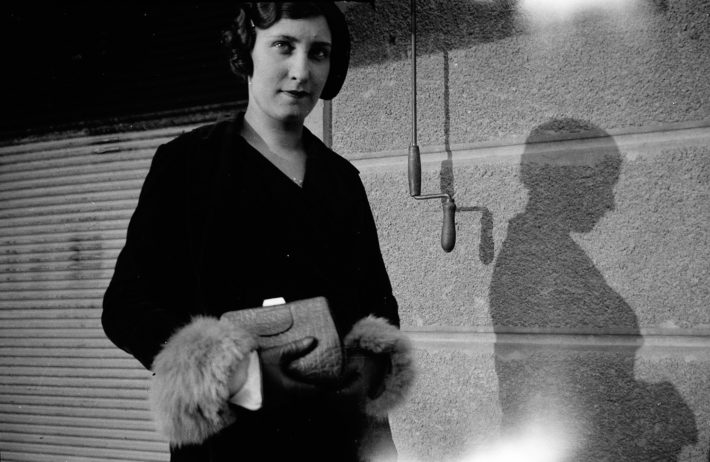
Carlo Mollino, Portrait (untitled), undated. Fondo Carlo Mollino, Archives section, Biblioteca Roberto Gabetti, Turin Polytechnic.
A set, in other words.
Yes, up there he had the city at his feet and absolute silence around him. He had a garage built with a door that could be opened by remote control, a piece of wizardry that the girls had never seen before. They were dancers, beautiful girls, probably from a modest socioeconomic background, who found themselves dealing with an eccentric character who took their clothes off, dressed them up and photographed them.
Taking erotic pictures.
Mollino’s eros had nothing to do with his photographs, they were two separate things. One of his models was paid for an interview by an American film director on one condition: that she would tell the absolute truth when asked about Mollino’s sexuality. Her answer: his sexuality was completely normal. If anything happened it was on the upper floor of the house: the light was blue. Do you remember that line from the song: “Abat-jour che soffondi la luce blu?”
Of course, Vittorio De Sica’s film Yesterday, Today, and Tomorrow, Sophia Loren’s striptease in front of Marcello Mastroianni.
Right. Blue light was part of popular imagery. Then he used instrumental music, so there were no words to distract him and her. A curiosity: his desire to be kissed on the mouth. He wanted a real, physical relationship. The model said that sometimes they had sex, at others not at all, because what he was interested in were the photos.
When not taking pictures he used to go skiing, or devote himself to motor racing.
The Bisiluro was an extremely sophisticated vehicle that contained a whole set of inventions. It was the first car he designed, and he designed it not for an ordinary race, but for the 24 Hours of Le Mans, one of the most demanding automobile races in the world.
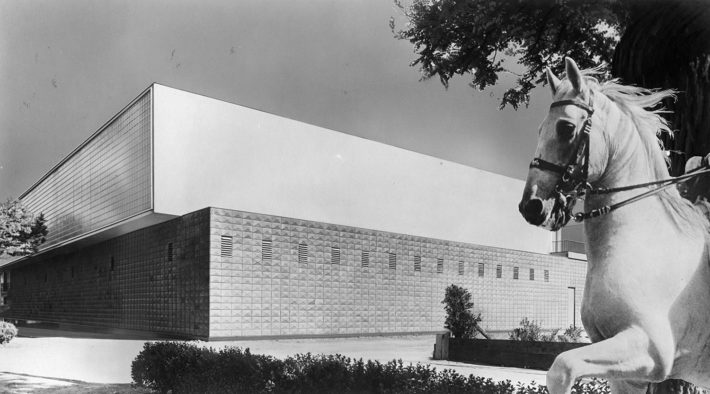
Carlo Mollino and Riccardo Moncalvo, Società Ippica Torinese,
photomontage, 1941. Fondo Carlo Mollino, Archives section, Biblioteca Roberto Gabetti, Turin Polytechnic.
Mollino also published a book on skiing: Introduzione al discesismo.
A unique, very interesting book, because, quite apart from its contents and the techniques of downhill skiing it describes, it tells us a lot about Mollino the engineer. He also wrote Architettura. Arte e Tecnica [Architecture: Art and Technique]: the slimmest of his publications. A book made up like Leonardo da Vinci’s codex on the flight of birds. Alongside the text there are drawings by Mollino, he used no photos. Mollino’s interests did not end here. Do you know the story of the cake?
No.
Carlo Mollino had an important client, the artist Ada Minola, perhaps his secret lover. For this lady he designed a significant and wonderful interior. Among the plans her heirs found a sheet of paper on which Mollino had written down the recipe of a cake for her. What does this mean? That he knew a lot about everything, even though he wasn’t interested in food, probably considering eating merely a necessary act, perhaps a bit like sex. Mollino was interested in the laws that govern anything. He certainly never even made a coffee for himself in his life, let alone a cake!
Who made coffee for him?
His housekeeper Aldina, someone who certainly cared about him. And he was very fond of her, perhaps the only person for whom he had a true and sincere affection. In fact he wrote down that if he were to die before Aldina, she should be given enough money for her to live on for the rest of her life.
In 1954 his father died, Mollino broke with his fiancée and for ten years constructed nothing. What did he do?
He gave up architecture and devoted himself to other things. He realized that his life had different outlines, that in fact architecture interested him only up to a point. For him it was certainly a means, like photography. In any case, he had already created his masterpiece, the Società Ippica Torinese, in the thirties. Ten years later his interest in architecture revived, he entered the competition for the Chamber of Commerce and won it. Then they entrusted him with the Teatro Regio.
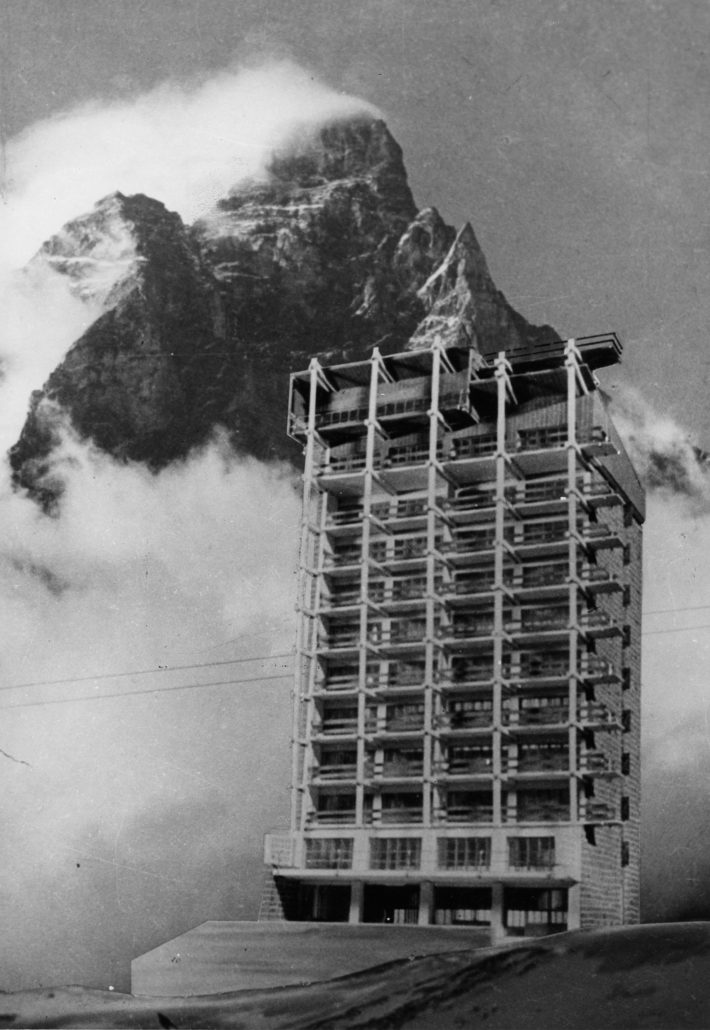
Carlo Mollino and Riccardo Moncalvo, Casa del Sole, Cervinia,
photomontage, 1955 c. Fondo Carlo Mollino, Archives section, Biblioteca Roberto Gabetti, Turin Polytechnic.
What was written on his business card?
On it was written: “Dottor Architetto Professore Carlo Mollino Accademico di San Luca.” So, evidently, he called himself an architect, but his life was other things too.
How did Carlo Mollino die?
Suddenly, of a heart attack, in his studio. He is buried in Voghera, the town where the family tomb is located.
Where did his inheritance go?
At a certain point Mollino was warned that the Financial Police might carry out an assessment of the taxes he had paid. In 1970 he ceded all the real estate he owned to an agency that guaranteed him an income for life and that would become the owner of the property on his death. Then there was his money and the car, the Porsche.
Where did he keep the money?
In Switzerland, of course. He died alone, with no heirs. No will was ever found. But he was generous: we know that he maintained a girl all the way through her studies, even though he never met her.
An illegitimate daughter.
No, I really don’t believe he had any illegitimate daughters. There were models and girlfriends at his funeral: they all hoped he had left them something, but in reality the only one who cried was the girl whose studies he had supported.
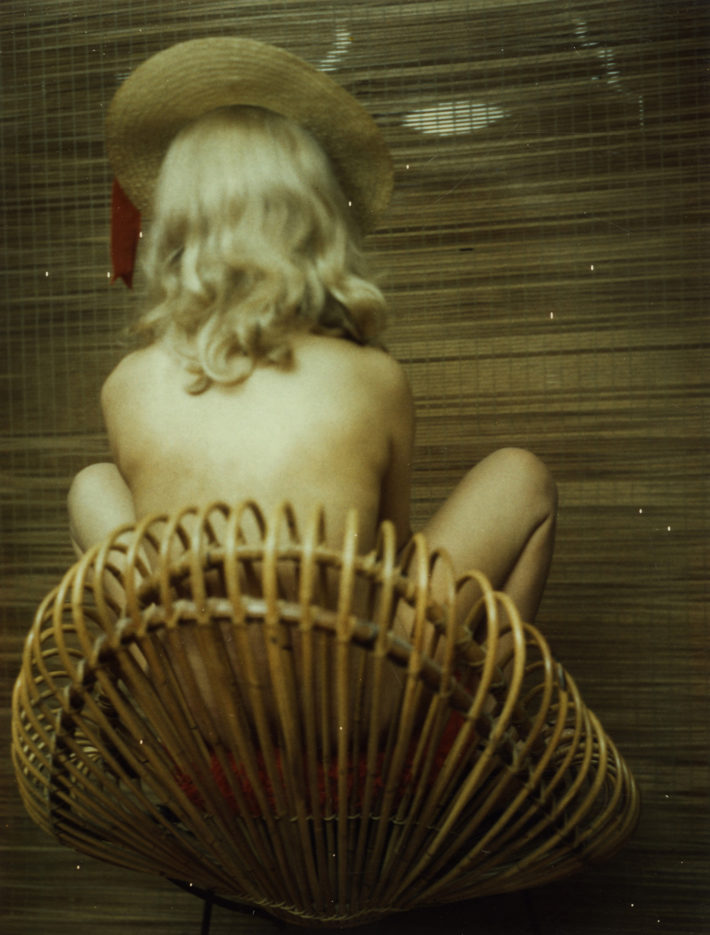
Carlo Mollino, Portrait (untitled), Polaroid, 1962-73. Fondo Carlo Mollino, Archives section, Biblioteca Roberto Gabetti, Turin Polytechnic.
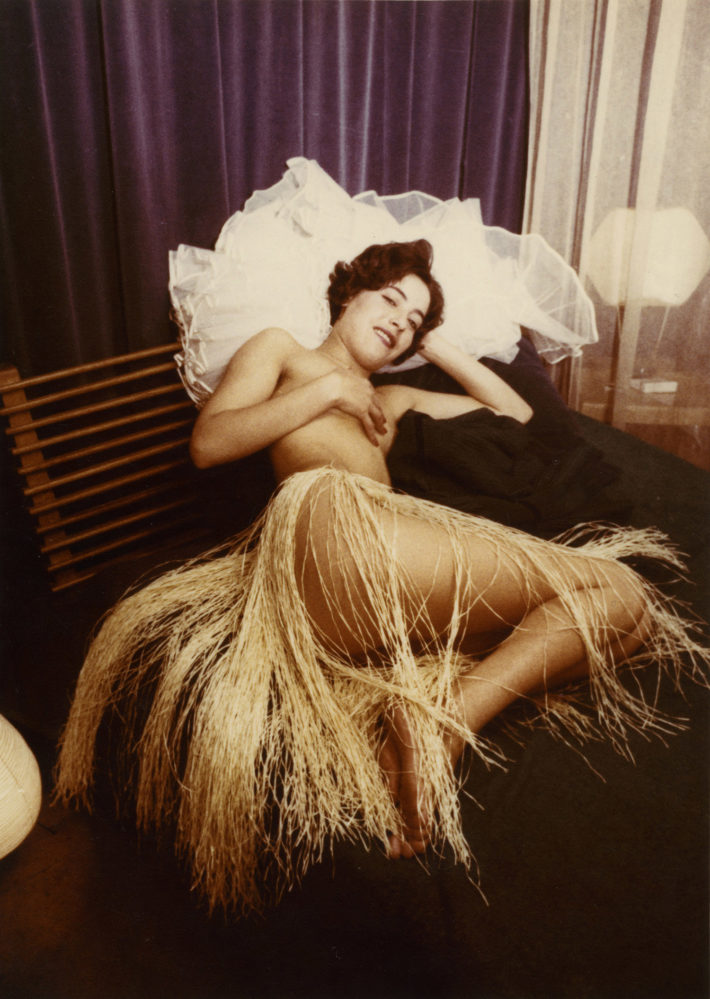
Carlo Mollino, Portrait (untitled), c. 1956-62. Fondo Carlo Mollino, Archives section, Biblioteca Roberto Gabetti, Turin Polytechnic.
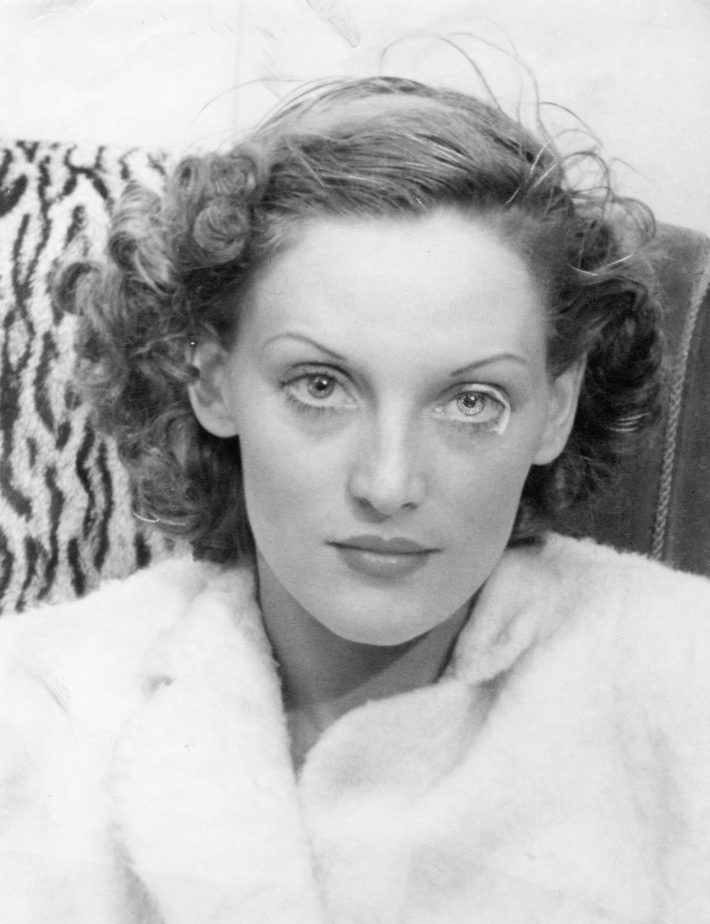
Carlo Mollino, Convalescent, c. 1936-39. Fondo Carlo Mollino, Archives section, Biblioteca Roberto Gabetti, Turin Polytechnic.
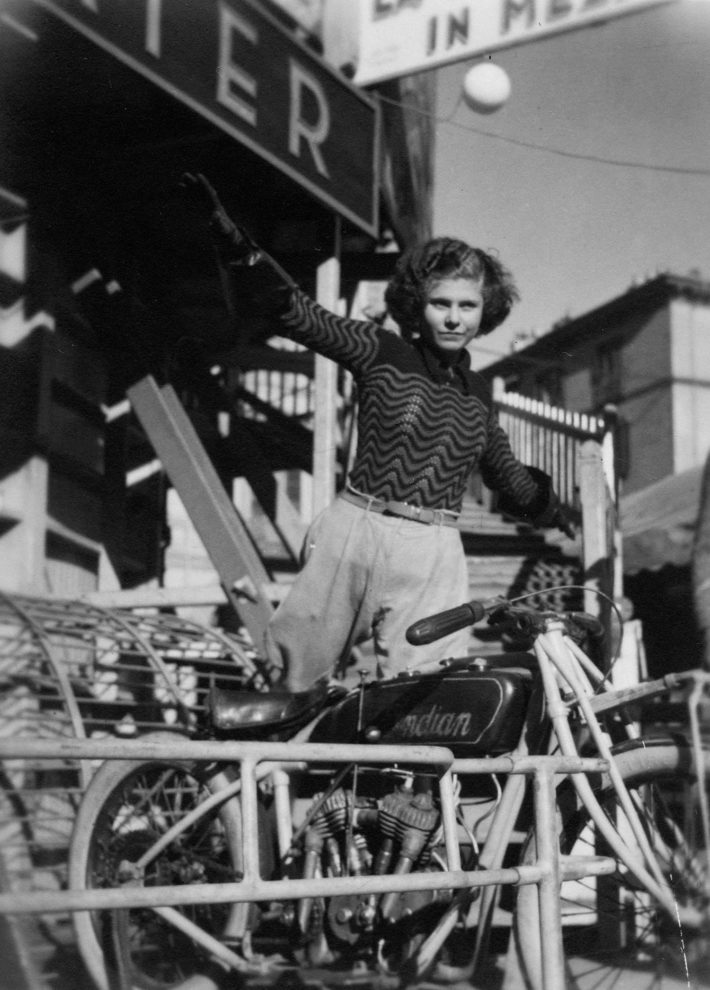
Carlo Mollino, Troupe of acrobats in Piazza Vittorio Veneto, Turin,
c. 1934. Fondo Carlo Mollino, Archives section, Biblioteca Roberto Gabetti, Turin Polytechnic.
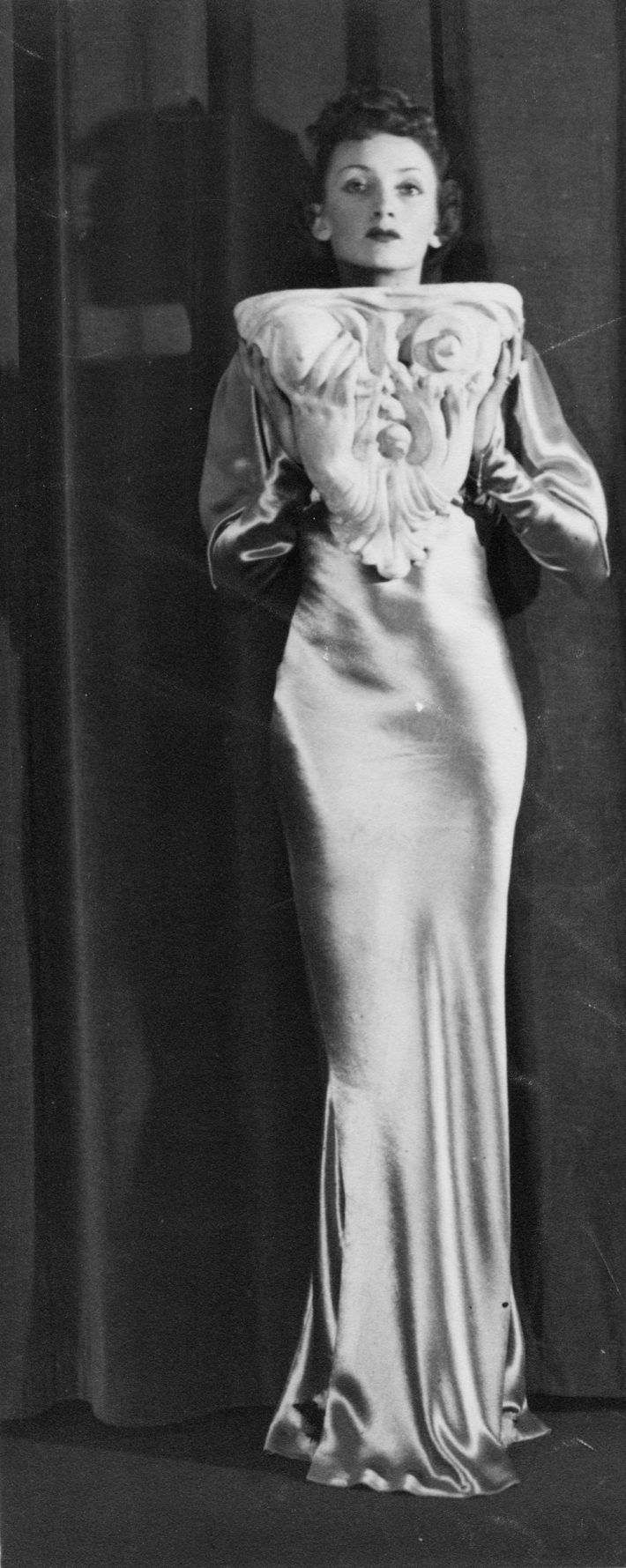
Carlo Mollino, Portrait of Lina Suwarowski in Casa Miller, Turin,
c. 1936-39. Fondo Carlo Mollino, Archives section, Biblioteca
Roberto Gabetti, Turin Polytechnic.